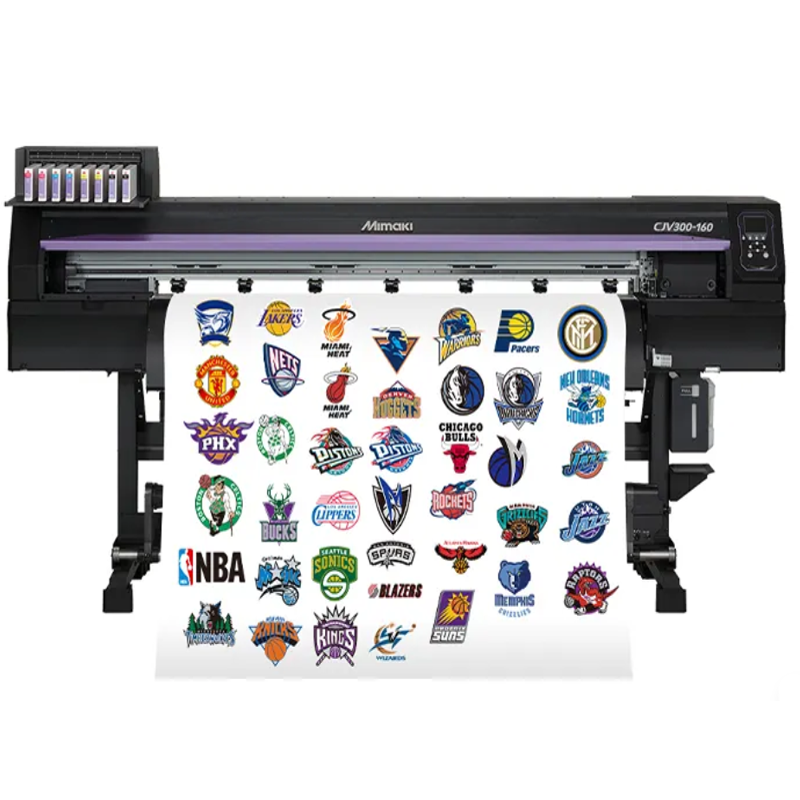
ເຄື່ອງພິມໃດກໍ່ສາມາດໃຊ້ໄດ້ທີ່ຈະພິມ HTV ໄດ້ບໍ? ບໍ່ແມ່ນເຄື່ອງພິມທັງ ຫມົດ ທີ່ ເຫມາະ ສົມ ສໍາ ລັບການພິມຮູບເງົາຕັດ (ຍັງເອີ້ນວ່າຮູບເງົາການໂອນຄວາມຮ້ອນ). ການເລືອກແມ່ນຂຶ້ນກັບປະເພດຂອງຮູບເງົາແລະເຕັກໂນໂລຢີການພິມ. ນີ້ແມ່ນຈຸດສໍາຄັນ:
ເຄື່ອງພິມ Inkjet
ຮູບເງົາທີ່ເຫມາະສົມ: ຮູບເງົາຕັດບາງໆທີ່ໃຊ້ນ້ ໍາ (ຕ້ອງການການເຄືອບພິເສດ).
ຄຳຂໍ້ມູນ: ຕ້ອງມີການດັດແປງສໍາລັບ "ສີມັງທີ່ມີສານລະລາຍທາງດ້ານສິ່ງແວດລ້ອມ" ຫຼືໃຊ້ສີມັງທີ່ມີການໂອນຄວາມຮ້ອນ (ເຊັ່ນ: ເຄື່ອງພິມ Epson inkjet ທີ່ຖືກດັດແປງ).
ໝາຍເຫດ: ສີນ້ໍາທົ່ວໄປອາດຈະໄຫຼເກີນ ຫຼື ຈางລົງ ແລະ ຕ້ອງການໃຊ້ເຄື່ອງປ້ອງກັນພິເສດ.
ເຄື່ອງພິມເເບບ Laser
ຮູບເງົາທີ່ເຫມາະສົມ: ຮູບຕັດເເບບ Laser (ມີເຄືອບຜິວໜ້າພິເສດ).
ຂໍ້ດີ: ໂຕໜັງສື/ເສັ້ນແຫຼມ, ເໝາະສຳລັບການຜະລິດຈຳນວນໜ້ອຍ.
ໝາຍເຫດ: ບາງຮູບຕັດອາດຈະຖືກຄວັນເຜົາໃນຂະນະທີ່ອັດດ້ວຍຄວາມຮ້ອນສູງ.
ເຄື່ອງພິມຖ່າຍໂອນຄວາມຮ້ອນພິເສດ
ຜົນໄດ້ຮັບດີທີ່ສຸດດ້ວຍສີທີ່ເປັນ Sublimation ຫຼື Solvent (ຕົວຢ່າງ: ເຄື່ອງມືອຸດສາຫະກຳເຊັ່ນ Mimaki ຫຼື Roland).
ເຄື່ອງພິມ Inkjet/Laser ທົ່ວໄປ:
ຖ້າຮູບຕັດບໍ່ມີເຄືອບພິເສດ, ສີຈະບໍ່ຕິດ ແລະ ຈະເປື້ອນ ຫຼື ຫຼຸດອອກມາ.
ຟິມສີອ່ອນ: ຕ້ອງການການພິມສີ, ໂດຍປົກກະຕິໃຊ້ເຄື່ອງພິມຫຼັກໆ + ສີທີ່ຖ່າຍໂອນຄວາມຮ້ອນ.
ຟິມສີເຂັ້ມ: ໂດຍປົກກະຕິໃຊ້ເຄື່ອງພິມເລເຊີ (ສີຂາວ/ຊັ້ນທີ່ຖ່າຍໂອນສີອ່ອນ) ຫຼື ວິທີ "ຕັດ + ລ້ຽງ" (ຕົວຢ່າງ, ຟິມ CAD-cut).
ຟິມບໍ່ຕ້ອງຕັດ: ພິມແບບອອກແບບໂດຍກົງກ່ອນຕັດ, ຕ້ອງການເຄື່ອງພິມ inkjet ທີ່ມີຄວາມແທດຈິງສູງ.
ຄວາມຕ້ອງການຂອງສີ:
ຕ້ອງໃຊ້ ສີທີ່ຖ່າຍໂອນຄວາມຮ້ອນ ຫຼື หมึก Eco-solvent —ສີມາດຕະຖານບໍ່ຕ້ານທານຕໍ່ການຊັກລ້າງ
ການປິ່ນປົວຊັ້ນປົກຫຸ້ມ:
ວັດສະດຸເຄືອບບໍ່ໄດ້ອາດຈະຕ້ອງໄດ້ຮັບການປິ່ນປົວກ່ອນ (ຕົວຢ່າງ, ສີພິເສດສໍາລັບເຄື່ອງພິມ inkjet).
ອຸນຫະພູມຂອງເຄື່ອງອັດຄວາມຮ້ອນ:
ຫຼັງຈາກພິມສໍາເລັດແລ້ວ, ໃຊ້ເຄື່ອງອັດຄວາມຮ້ອນ (130°C~160°C, ອ້າງອີງຕາມສະເພາະຂອງວັດສະດຸເຄືອບ).
ໃນເຮືອນ/ຈໍານວນນ້ອຍ:
ເຄື່ອງພິມ Inkjet ທີ່ດັດແປງຈາກ Epson (ຕົວຢ່າງ, L805) + ວັດສະດຸເຄືອບທີ່ມີສີອ່ອນ.
ທາງການຄ້າ/ຄວາມແທດເຈາະຈົງສູງ:
ເຄື່ອງພິມອຸດສາຫະກໍາທີ່ໃຊ້ວິທີການລະເຫີຍ (ຕົວຢ່າງ, Epson ຊີຣີ F) + ແຜ່ນຮັບທີ່ໃຊ້ສໍາລັບການໂອນສີ.
ເຄື່ອງພິມທົ່ວໄປບໍ່ສາມາດພິມແຜ່ນຕັດໄດ້ໂດຍກົງ - ທ່ານຕ້ອງເລືອກໃຊ້ແຜ່ນຕັດໃຫ້ເໝາະກັບເຄື່ອງພິມແລະຫມຶກທີ່ຖືກຕ້ອງ. ກະລຸນາທົດລອງໃຊ້ຕົວຢ່າງນ້ອຍໆກ່ອນເພື່ອຫຼີກລ່ຽງການສູນເສຍວັດຖຸດິບ!
 ຂ່າວຮ້ອນ
ຂ່າວຮ້ອນ2025-08-28
2025-08-18
2025-08-11
2025-08-04
2025-07-25
2025-07-23